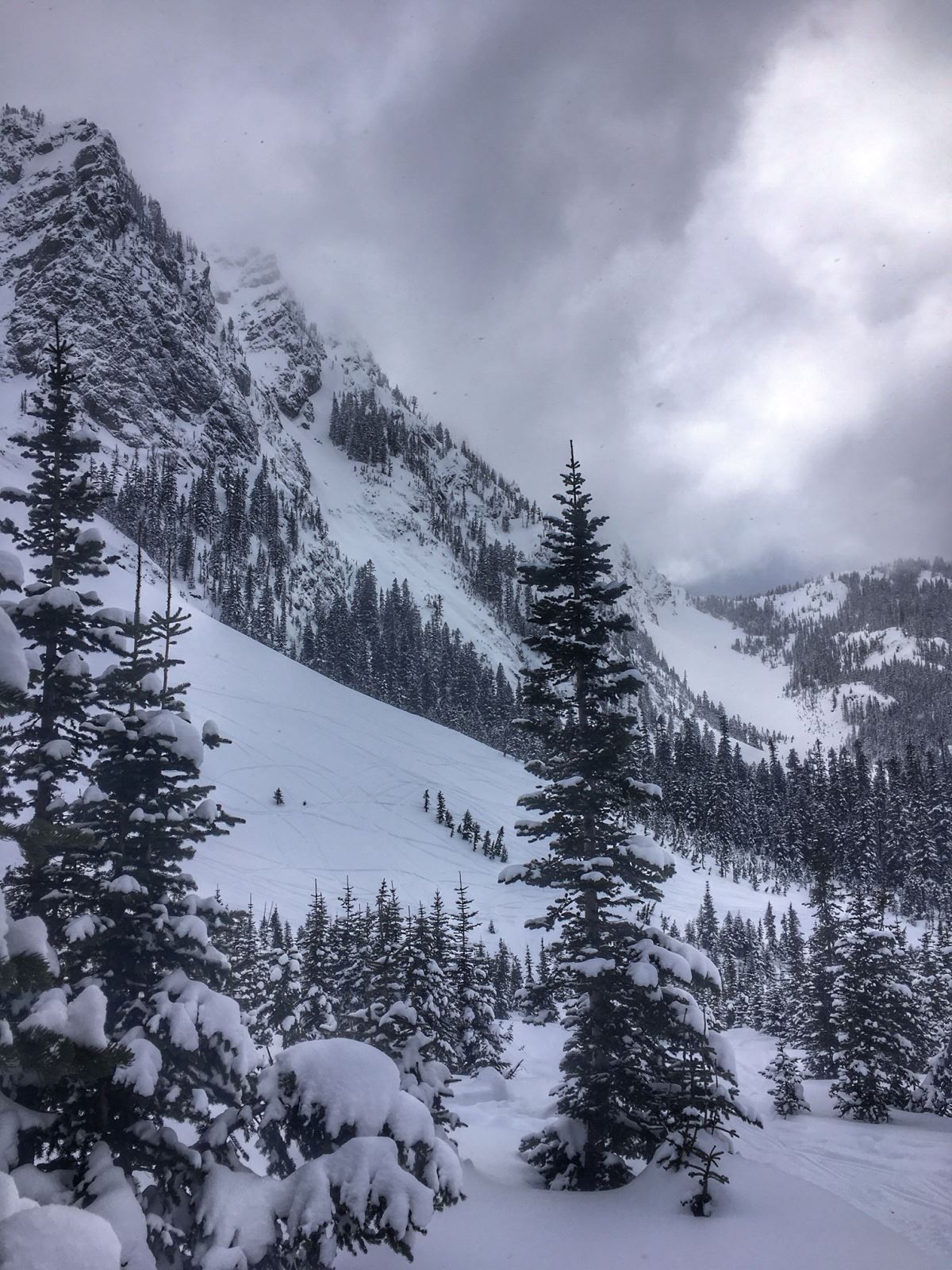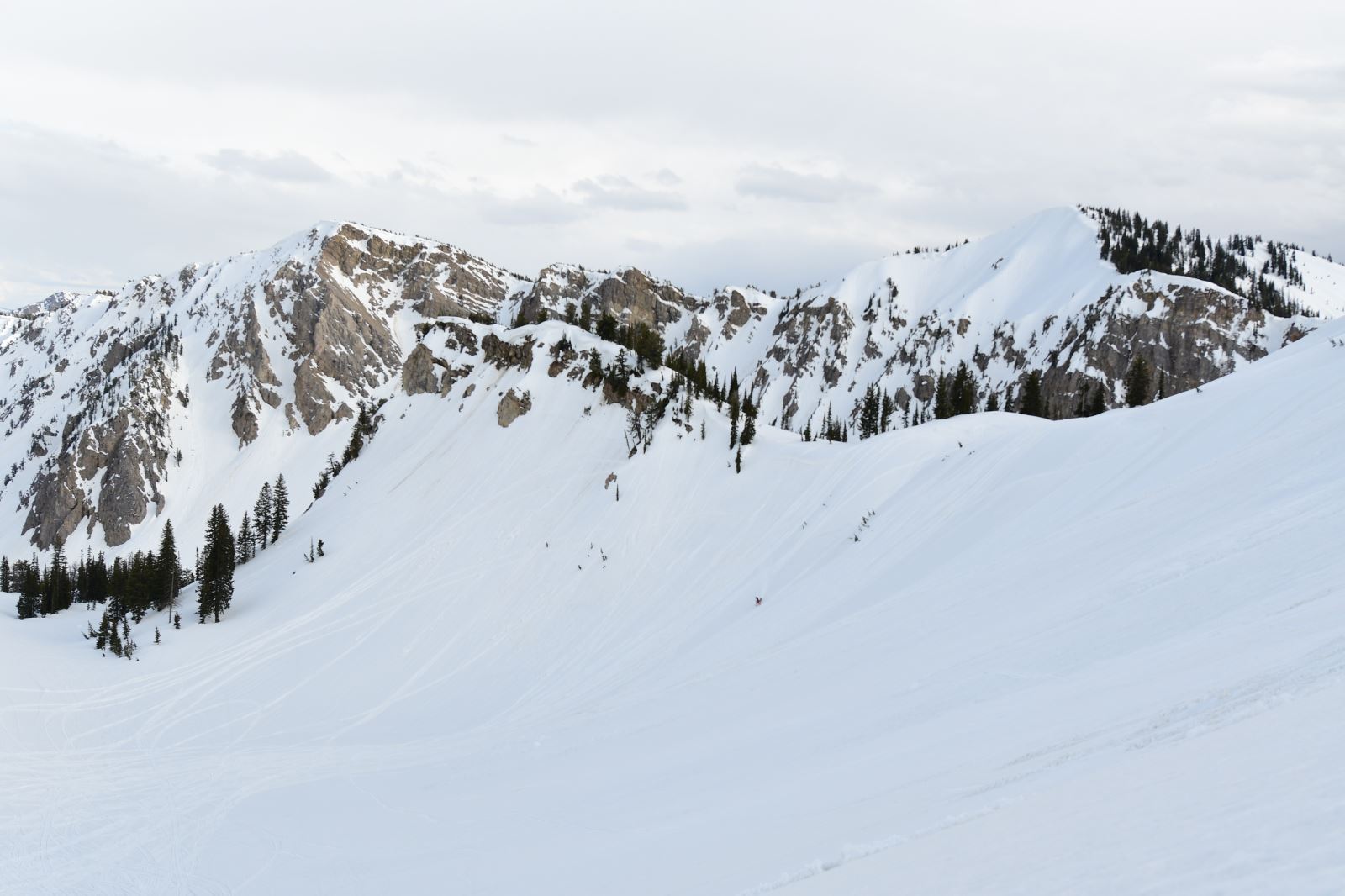You learn quite a bit from listening to your students in avalanche classes or seeing their reactions to what you teach. Students don’t see terrain in the same way that I do. Situational awareness in avalanche terrain comes from years of training and experience.
When many riders look at terrain, they’re wondering: will they get stuck, can they hold the line or what is their plan B. That is their primary focus.
I’m definitely looking at those same things … but my prime focus is different. I’m analyzing the terrain and snowpack as they relate to avalanches.

Here are the basics before any ride. First, check the avalanche forecast and check the weather. Next, eliminate any terrain that may be of high risk from the plans of that day’s ride. Then communicate your findings to you group. Finally, before you head out the door, do a thorough gear check.
By doing these simple basics, you’ve just eliminated many of the problems associated with avalanche fatalities. The next key to the avalanche accident problem is riding with people who have current advanced avalanche training. Too many mistakes are made and rescues botched due to poor skills.
Reality Check
We cover terrain at a fast pace and must analyze changing snow conditions on the fly. We don’t plan exact routes. We tend to go where it looks good at the moment and where the snow is untracked.
Because we have horsepower, we don’t have to be efficient or restricted to the most common route. We see lines and we take lines. And as lines change, we quickly adjust our routes. Because of this, it can be easy to miss warning signs of changing snow conditions. You have to be constantly engaging the brain if you want to be safe. Part of the appeal of backcountry riding is that it’s a thinking game. To avoid getting caught in an avalanche, you must analyze quickly on the fly.
Getting Clues
When you step off your sled, do you sink through all the layers of the snowpack? Either it’s a great powder day or there are weaker layers underneath the slab you’re punching through.
Snow should get denser as you get closer to the ground. If not, it’s a sign of weaker snowpack. So you need to decide: Is it ready to slide now? How much weight will it take to trigger it? That’s something to think about. Also, the snow might be safe now, but the next storm could overcome the strength of the snowpack.
Are you getting stuck in snow that acts like sugar? Is your ski suddenly diving or breaking through to deeper layers on powder turns? Are you trenching and shouldn’t be? Is there a distinct slab between your ski and track impression? Is the snow cracking, collapsing or feel hollow?

These are all signs of instability. We can miss many clues due to the sound of our machine and the pace we are going. When I stop, I shut off the sled and listen for the feel or sound of collapsing as other sleds approach. Collapsing and cracks are a sign of serious instability.
There are five signs of snowpack instability: Significant snowfall or rain, recent avalanches, rapid warming, wind, and collapsing or cracking of the snow.
Remember that persistent weak layers may show no signs … but they are responsible for the most avalanche fatalities. Again, check the forecast.
Spotting Trouble
Here are some of the things I’m constantly looking for while riding in the back country.
* Slope angle. Is it steep enough to slide? Most people aren’t good at guessing. Practice with an inclinometer. Two of my favorite apps for this are: Backcountry Access. Avalanche Inclinometer by Iterum.
* Aspect in relationship to avalanche problems of the day?
* Where would the avalanche take me? It is hard to survive if you are taken into a terrain trap which compounds the consequences of an avalanche. This includes: trees, cliffs, rocks, creek beds, depressions and v-shaped valleys.
* Where is the mass (if it avalanches) in relationship to where I am? You are more likely to survive if the mass is below you.
* What’s above me?
* Am I stopping in a good place or am I in the run-out zone for an avalanche?
* How far are the avalanches running?
* Where are other riders in relationship to me? Can they trigger something and take me out.
* What’s my plan B or escape route to get out of this situation?
* What are the potential trigger points on the slope and what is the best route to avoid triggers? I’m avoiding convex roll-overs and rocks when conditions dictate.
* Are remote triggers a possibility today? Need to give yourself a wider safety margin of where avalanches can be triggered.
* Does someone have an eye on me if something goes wrong?
It’s a lot to think about, but it becomes second nature when you do it all the time.
Sometimes things just happen. Someone in your group for whatever reason cuts above you on the slope putting you at risk. Or perhaps while boondocking you break out onto a slope that isn’t a good place to be that day. You have always got to be looking for options and ready to pull a quick 180 and look for a better location.
If someone drops down into a suspect slope, you don’t have to follow. You can always find an alternative route that is safer.
You’re riding a creek bed and it gets narrow and steeper with larger open slopes above you? It’s definitely time to change your plan.
Someone stops for a break. You need to analyze where you’re at immediately to decide if it’s a good spot or in a run-out path.
A rider gets stuck on a steep slope. Do you help? Will your weight trigger an avalanche catching both of you? This happens every year. (Sometimes it’s just best to let them dig themselves out.) Back country riding is a thinking game—picking the right terrain, choosing routes and avoiding potential avalanche problems.
Stop and Look
It never hurts to stop and look. You have all day to track up the snow, don’t make it the rest of your life.
Many times last year, the avalanche forecast predicted one thing and we observed another. As you’re driving to the trailhead be looking for recent avalanches and wind activity.

Last winter we looked up from one parking lot and noticed a recent avalanche. That changed our perspective for that aspect for the day. While you’re riding, if the sky clears, stop and look around for instability. Those few minutes can open your eyes to what is really going on. Forecasters can’t be every where, you may be the first into the area so observation is essential. Those who are the most observant tend to have fewer bad experiences.
Just Say No
We’ve all been in the situation where someone is making a bad terrain choice for the conditions. If you’re not comfortable with it, the best advice I can give you is to speak up. Hit the brakes, get on the radio and let them know why you’re not good with it.
Don’t just follow. So many accident reports state that other people in the group thought it was a bad idea, but didn’t say anything.
Most accidents involve the human factor in decision making, meaning we don’t make good decisions all the time. Often we let other things influencing the decision. So speak up. Some people wing it and rely on luck, not a good formula for success in avalanche terrain. The odds tend to catch up with you.
(EDITOR’S NOTE: Mike Duffy is a teaches professional avalanche education for mountain riders. You can follow him at Instagram: avalanche1.colorado;r Facebook: Avalanche1; or at www.avalanche1.com.)